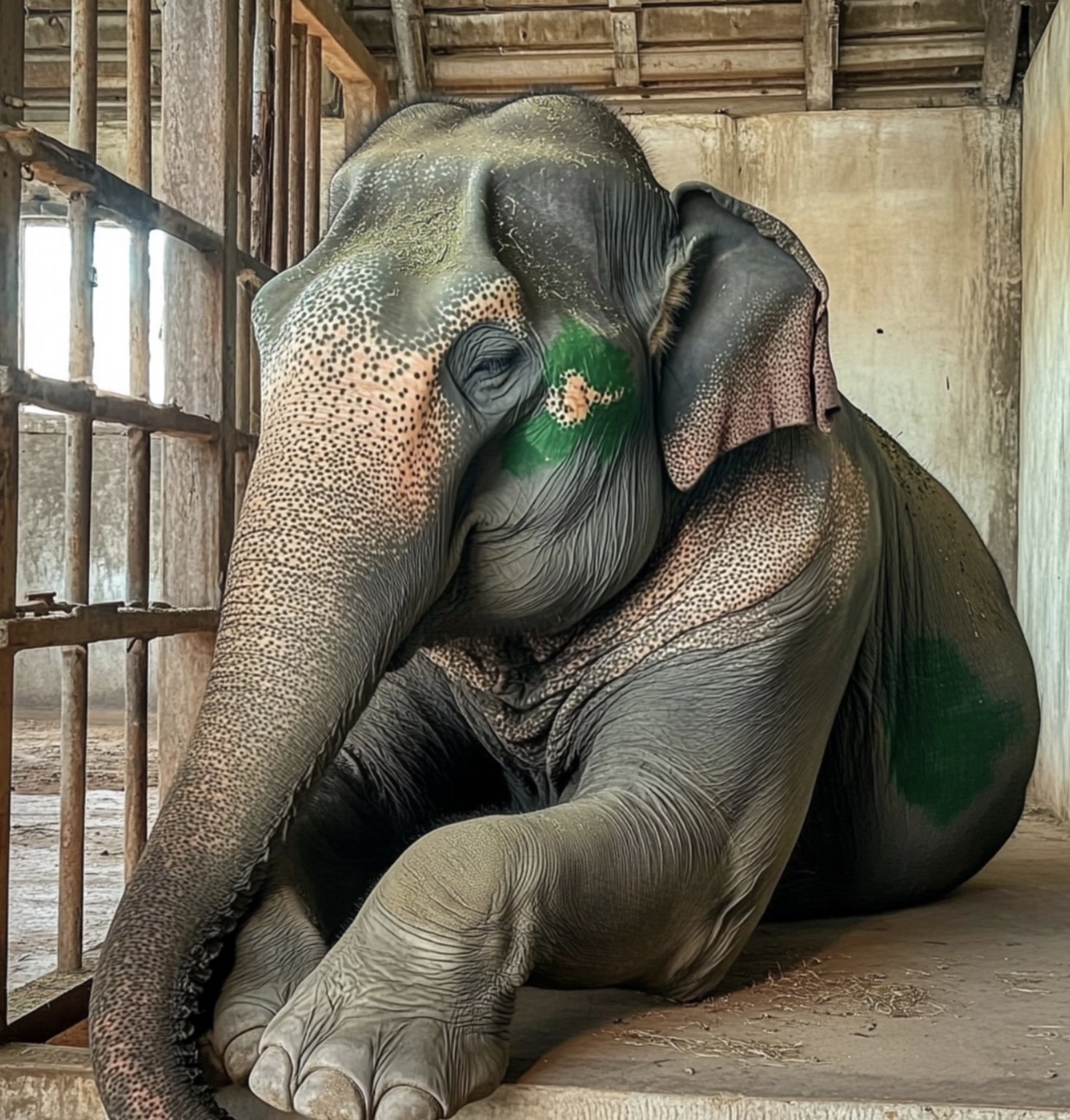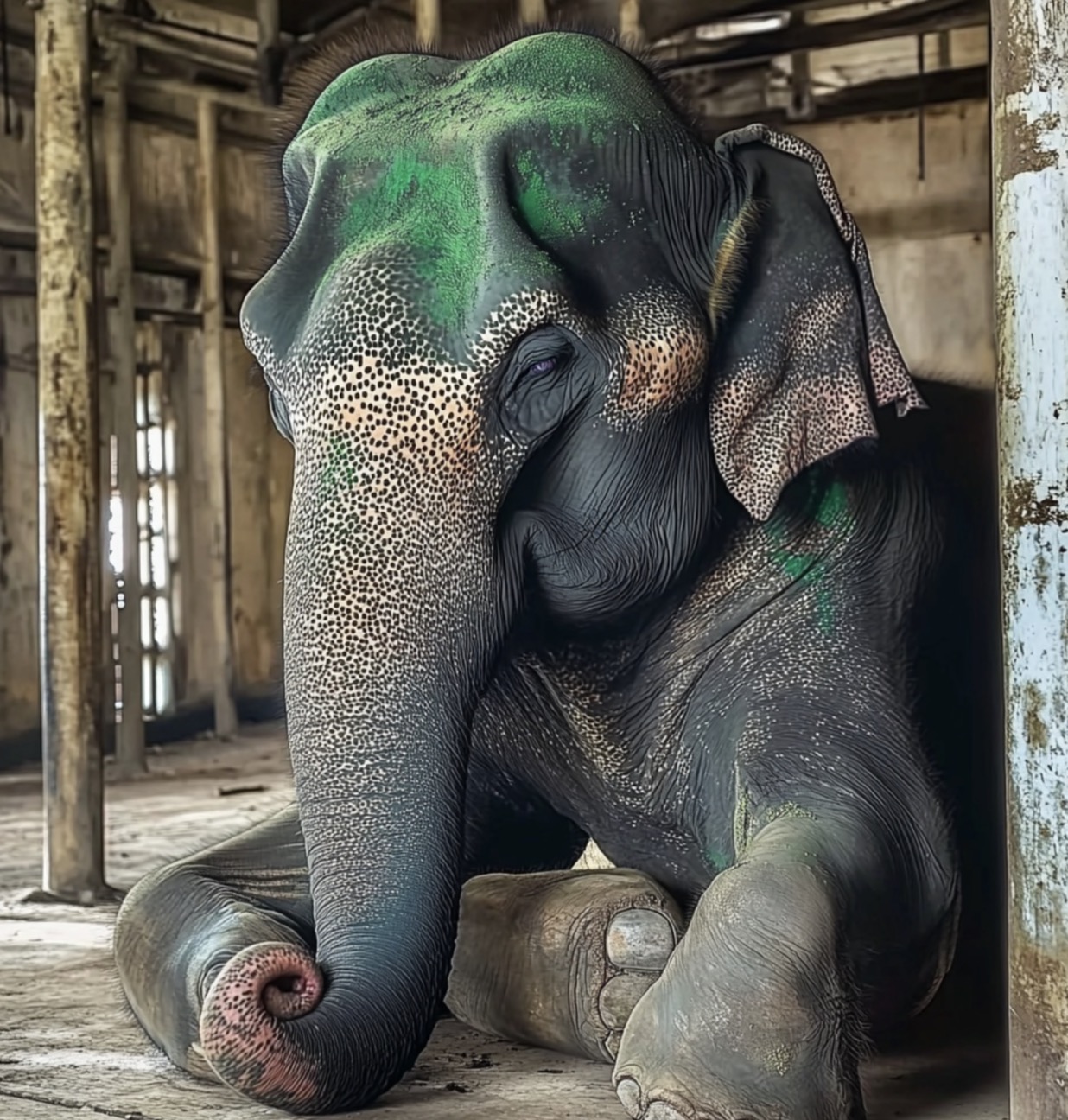
Elephants were never meant to live in chains.
Not on cold concrete floors.
Not under the crack of a whip.
And certainly not as props for entertainment.
And yet, that is exactly how they have been treated for decades—used, mistreated, and discarded like old tools. It’s hard to imagine such a life, but for some, it’s the only one they’ve ever known.
This elderly elephant was taken from the wild when she was just a helpless calf. For over eighty years, she was forced to work without rest, carrying heavy burdens in the logging industry and being paraded around for tourists.
She spent her days standing for hours, walking through heat and dust, carrying people on her back, responding to commands she never chose to follow. She was separated from her offspring, used in street begging, made to perform in shows, and offered as a ride for paying visitors.
All while the world watched.
All while crowds smiled for photos.
All while no one asked what it cost her.
Then one day, everything changed.

A group of rescuers—people who have dedicated their lives to helping elephants in distress—learned about her condition. They didn’t hesitate. They put together a plan. This wasn’t just a rescue. This was justice. A second chance, long overdue.
“It’s time for her to be properly cared for and finally allowed to rest,” they said. And so they went.
The journey was hard—on everyone, but especially on her. She was frail, dehydrated, visibly malnourished. Her skin was dry and cracked. Her eyes were clouded with age and exhaustion. She had lost a tooth. Her strength had faded long ago.
But they made it. And for the first time, no one shouted. No one pushed her forward. No one forced her to carry anything. Instead, she was given something simple: a bed of soft sand.
Freedom to lie down.
To close her eyes.
To not feel the pull of iron shackles anymore.
At the sanctuary, most newly rescued elephants take days or weeks to feel safe enough to lie down. The trauma runs deep. The instinct to stay alert, to remain on guard, is almost impossible to suppress.
But she was different.
She lay down almost immediately. Right there, surrounded by the unfamiliar. She didn’t care. She was too tired, too worn, and—for the first time—safe. She fell into a deep sleep, ignoring the noise and activity around her. Her body had waited a lifetime for this.
Getting back up wasn’t easy. Her legs were weak, her joints stiff from years of strain. But with slow, careful effort, she managed to stand.
It wasn’t just physical.
It was a symbol of reclaiming life.

Her new days began slowly. Meals full of nutrition, fresh water, healing sand baths, gentle massage. Her feet—scarred from years of tight chains—were finally free.
And the other elephants around her? They weren’t threats. They were survivors too. Silent witnesses to the same suffering. Now, they shared in something rare: peace.
She still requires constant care.
Her body carries too many signs of what she’s been through.
But her eyes… her eyes are different now. They’re still tired, but no longer hollow. There is warmth there. Hope.
Her journey isn’t over. But she’s learning.
That not all hands hurt.
That not all voices command.
That not everything must be earned through obedience.
Those who care for her see it in the smallest gestures:
— when she stands a little closer,
— when she accepts touch,
— when she no longer flinches at a sudden sound.

Small steps.
But after eight decades of silence and suffering, they are monumental.
Her story is not unique, sadly. But it matters deeply.
Because it proves that healing is possible.
That even after a life of pain, a spark of life remains.
And all it takes is someone to see it—and not turn away.
The moment she rested her head on that soft sand was more than just a nap. It was a moment of truth. A silent, powerful declaration:
“I’m still here.”
In a world that often looks the other way, there are still places where healing begins.
And in one quiet corner of a sanctuary, a soul that was broken is slowly, bravely learning how to live again.





